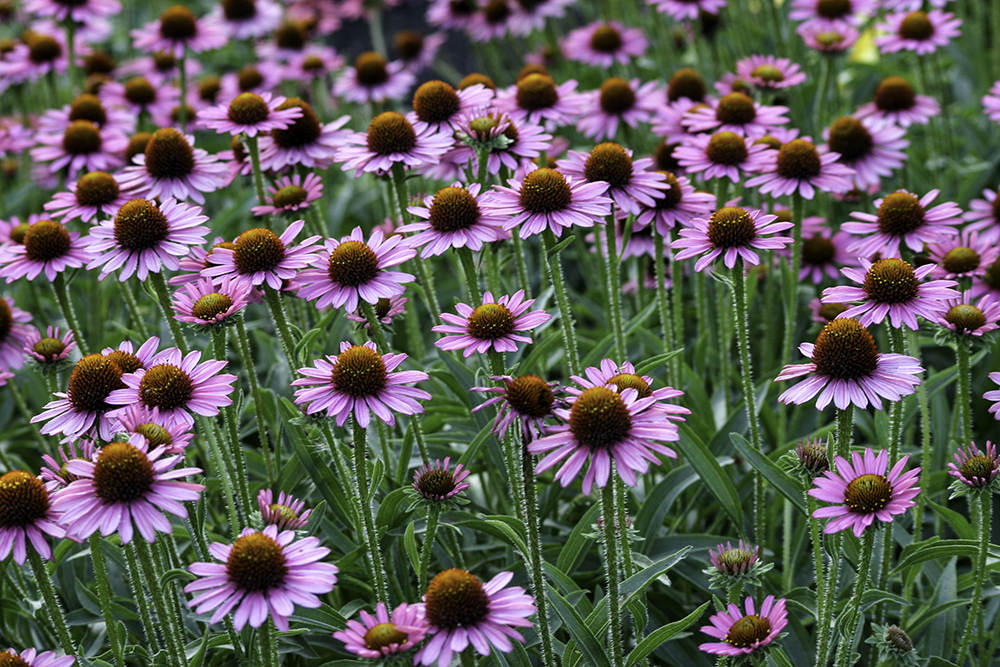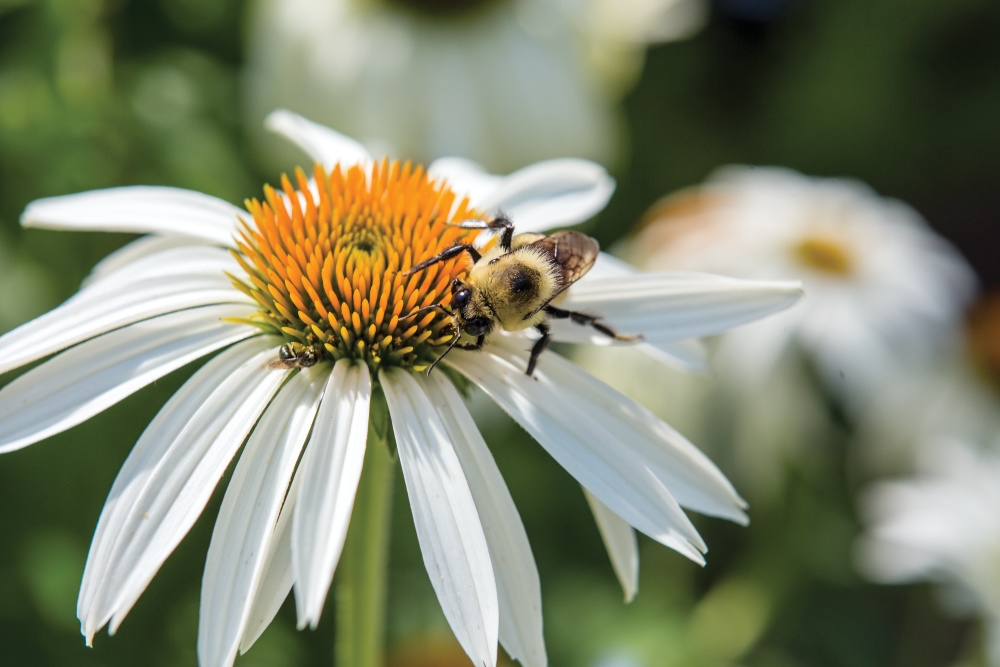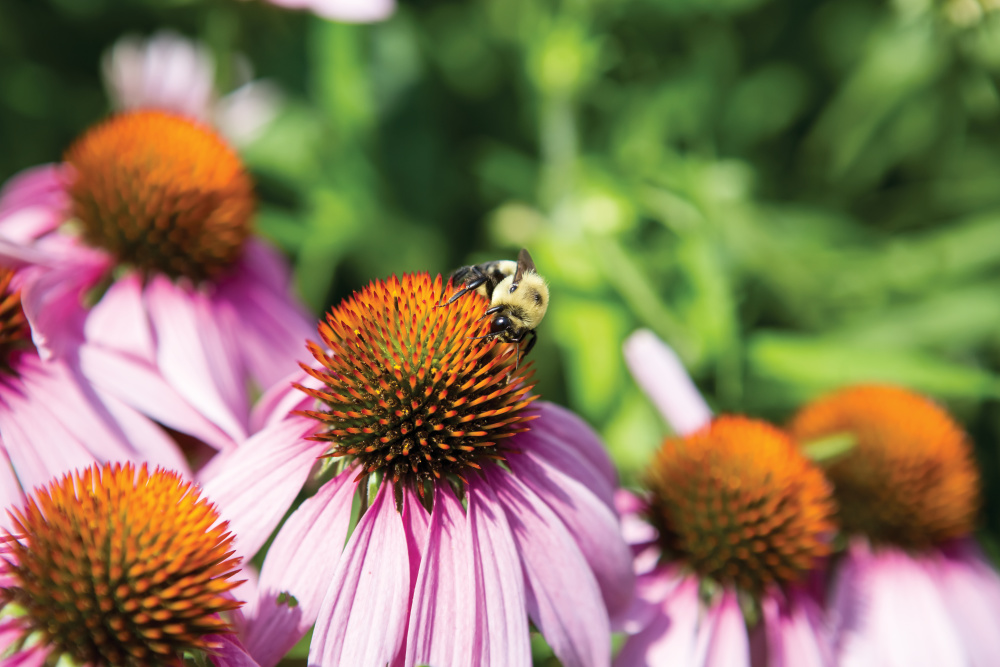Home > Lifestyle > Garden > How to Grow Echinacea
How to Grow Echinacea

Native to the United States and commonly referred to as coneflowers, echinacea are a popular home garden plant with a reputation for being drought- and heat-tolerant as well as attractive to a variety of pollinators. Their spectacular array of colors, ranging from pink and orange to yellow and red, make them a sight to behold both in the garden and as cut flowers with a generous vase life. Read through our guide below to learn how to grow echinacea and keep your plants healthy.
See more: 12 Flowers to Beautify Your Landscape This Fall
All About Perennial Echinacea
- Botanical Name: Echinacea spp.
- USDA Plant Hardiness Zones: 3-9
- Height: 2-5 feet
- Sun Exposure: Full sun
- Soil pH: Varies
- Spacing: Depends on variety
- Blooms: Summer and fall

What Are the Benefits of Echinacea?
Deer-resistant and attractive to bees and butterflies, echinacea makes for a laidback and beautiful addition to many home gardens. Because coneflowers have a number of composite flowers, they are said to provide a sort of “buffet table” for a host of winged pollinators, making them an excellent addition to any garden with a variety of plants in need of pollination to produce fruit.
Echinacea was also historically used among Native Americans of the Great Plains in traditional medicine. It is said to aid in the alleviation of cold symptoms and help stimulate the immune system when consumed in the form of tea. Some say it has healing properties topically when applied to the skin as well. Some people have reported allergic reactions to echinacea, however, so bear that in mind before using it medicinally.
See more: How to Start a Pollinator Garden
How to Grow Echinacea
When to Plant Echinacea
There are nine varieties of echinacea, and their planting requirements vary depending on the variety and USDA hardiness zone where they are planted. But the general rule of thumb is to plant in early spring or summer.
Prepare the Soil
Echinacea thrives in locations with well-draining soil and full sun. Once you have chosen your planting site, break up the soil (about 12 inches deep) to allow the roots access to spread once transplanted. Amend the planting site with compost.
How to Plant Echinacea
Place the root ball in a hole that is twice as wide as the plant’s diameter and level the top of the root at the surface of the soil. Fill in the hole with your loosened, amended soil, being sure to plant each coneflower anywhere from 1 to 3 feet apart depending on the variety and its specific spacing requirements. Water in the plant and cover the base with another layer of compost and a top layer of mulch to discourage excessive weeds.

How to Care for Echinacea
Watering Echinacea
Once in the ground, echinacea is hardy and in need of little care. They are drought-tolerant, which means they can handle minimal water once established. New plants need a little extra TLC in this department until their roots are established, so keep an eye on them and water occasionally if rain is scarce.
Fertilizer for Echinacea
If you planted a native variety of echinacea in the ground, you don’t need to worry about fertilizing. If you planted them in a container, consider a fertilizing schedule to maintain adequate nutrition in the soil.
Deadheading Echinacea
While not considered an aggressive or invasive plant, echinacea will self-seed and spread if left to its own devices. In order to prevent this, you need to deadhead the spent flowers as soon as they fade. You can also promote more fall growth (as well as more compact plants) by trimming the stems back about a foot once they begin to produce flowers. Some gardeners enjoy cutting only a few stems to produce staggered heights for a more aesthetic appeal in autumn.
Mulching Echinacea
Spread mulch near the end of autumn if you live in a colder region to protect the plants from the impending frost.
See more: 11 Trees to Plant in Your Yard for Beautiful Fall Colors Year After Year
Can You Grow Echinacea in Pots?
Coneflowers thrive as perennials when planted in the ground, but you can grow them as annuals in containers with a bit of effort. Choose a container deep enough for their taproots to take and spread (2- or 3-gallon pots are recommended as a minimum), place crushed gravel or stones at the bottom to promote drainage, and use a quality potting mix. Once transplanted, potted echinacea should be placed in a partially shaded spot for a few days to acclimate before moving to its final location in full sun. Water deeply but infrequently and use a 10-10-10 fertilizer once a month.

Echinacea Growing Tips
To enjoy echinacea for an extended period of time, plant a mix of early and late-blooming varieties in various colors. Some early blooming favorites include Green Jewel and Merlot, while late bloomers such as Pica Bella will continue to produce blooms into mid-autumn.
Cut a few stems in a cluster to enjoy varied heights, which adds visual appeal and a cottage aesthetic to your garden.
Choosing a location where you can plant these clumping flowers in mass along borders or in meadows is the preferred choice of many home gardeners. A bonus of planting in mass is the ability to harvest the long, strong stems as cut flowers throughout the growing season without detracting from the outdoor garden.
Choose quality companion plants that thrive alongside echinacea for an even more beautiful display throughout summer and fall. Shasta daisies and black-eyed Susan are among the top suggestions.




Hello Fellow Planter! This is my first year growing echinacea. I really appreciate their beauty and hardiness. Can you tell me…Does it benefit the plant to be dead-headed in the fall? I live at 7,000’ altitude in New Mexico. Many thanks, Jan